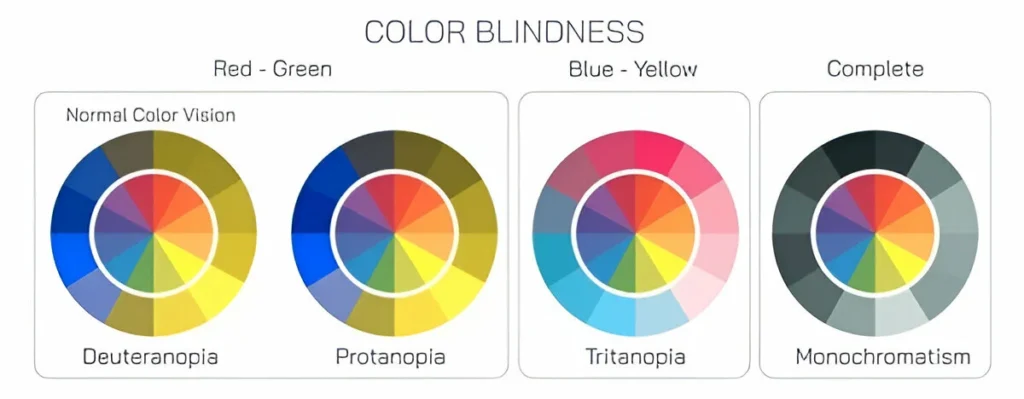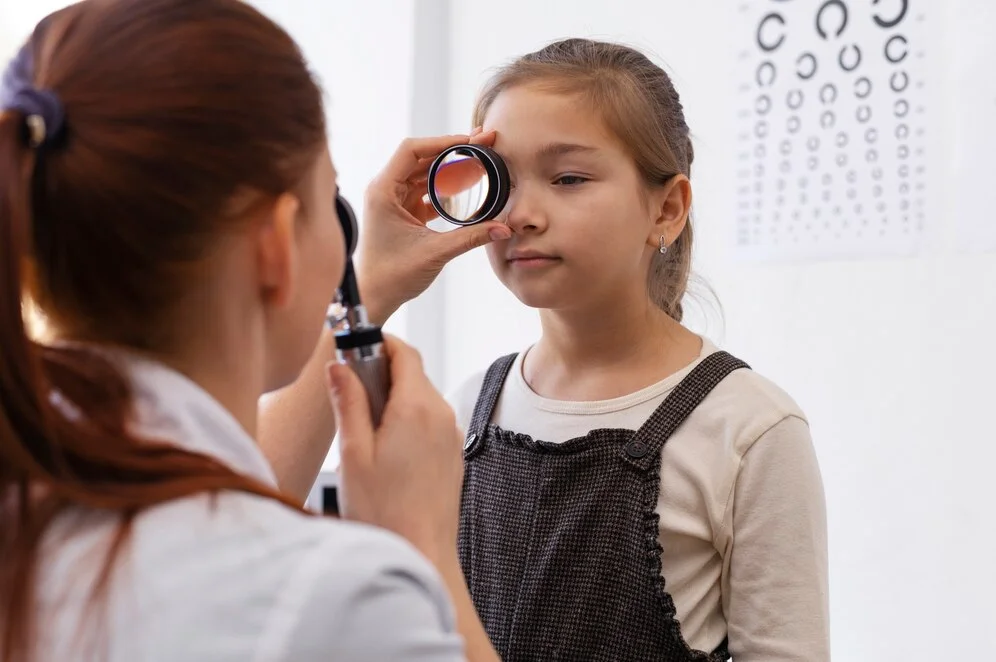Color Blindness in Young Children can often go unnoticed. Learn how to detect early signs, understand causes, and seek expert help from a reputed eye surgeon.
Seeing Through a Child’s Eyes
Imagine this: your child calls a red apple “green,” or struggles to color the sky blue in a drawing. You might laugh it off as a cute mistake—but what if it’s not? Color perception develops early in children, and difficulty recognizing or naming colors could be more than a delay. It might be color blindness—a condition that, if left unnoticed, can affect learning and development.
Most children don’t know how others see the world, so they rarely complain. That’s why the responsibility falls on parents, educators, and eye care professionals to observe and act early.
Let’s explore what Color Blindness in Young Children really looks like, how you can identify it, and what to do next.

What is Color Blindness?
Color blindness, medically known as color vision deficiency, is the inability or decreased ability to distinguish between certain colors. It usually involves trouble differentiating reds and greens, though other combinations (like blue and yellow) can also be affected.
It’s important to note that color blindness doesn’t mean seeing in black and white. Most individuals with this condition can still see a wide range of colors—just not the full spectrum most people do.
Types of Color Blindness in Children
There are several forms of color vision deficiency, and each affects children differently. Understanding the type can guide diagnosis and educational support.
1. Red-Green Color Blindness (Most Common)
- Protanomaly/Protanopia: Difficulty or inability to perceive red light.
- Deuteranomaly/Deuteranopia: Difficulty or inability to perceive green light.
2. Blue-Yellow Color Blindness
- Tritanomaly/Tritanopia: Difficulty in distinguishing between blue and yellow hues.
3. Complete Color Blindness (Rare)
- Known as achromatopsia, where the child may see everything in shades of gray. This form is extremely rare and often comes with light sensitivity.
Causes of Color Blindness in Young Children
The root of color blindness lies in the retina, the part of the eye responsible for sensing light. Special cells called cones help detect color. If one or more cone types are missing or malfunctioning, color perception is affected.
Most Common Cause: Genetics
- It’s usually inherited from the mother, and boys are much more likely to be affected.
- An X-linked recessive trait, which means it’s passed down through the X chromosome.
Other Possible Causes
- Eye injuries
- Nerve damage
- Exposure to certain chemicals or medications
- Underlying health conditions
While most children with color blindness are born with it, it’s worth noting that acquired cases are also possible.

How to Spot Color Blindness in Young Children
Children often don’t have the words to describe what they see—or don’t see. Here are practical signs and behaviors that might suggest color vision deficiency:
Behavioral Clues:
- Uses incorrect colors in drawings (e.g., purple sun, green faces)
- Struggles to identify or name colors
- Seems disinterested in coloring or matching games
- Mixes up colors frequently—especially red, green, and brown
- Reacts with confusion to colored instructions in school
Learning Challenges:
- Trouble reading color-coded charts or maps
- Difficulty with classroom activities that involve colors (science charts, math blocks, etc.)
- May appear to have learning delays due to misinterpreting visual cues
At-Home Indicators:
- Doesn’t comment on colorful toys or environments
- Avoids choosing clothes based on color
- Frustration during coloring or craft activities
If you spot more than one of these signs consistently, it’s time to consider testing.
When Should a Child Be Tested?
Most eye care professionals recommend testing for color blindness around the age of 4, when children can typically understand and follow instructions for vision screening tests. However, earlier signs can still be observed at home.
Testing Methods:
- Ishihara Plates: Dot-based patterns that reveal numbers or shapes only visible to those with normal color vision.
- Cambridge Color Test: Computer-based tool using patterns similar to Ishihara.
- Farnsworth D-15: Sorting colored discs to detect mild deficiencies.
These are painless, non-invasive, and usually quick to administer.
Why Early Detection Matters
Color blindness, if undetected, can create frustration in young learners. In early education, where color is frequently used to teach everything from math to reading, this can result in:
- Misinterpreting instructions
- Declining interest in learning
- Unfair academic judgment
- Reduced confidence
The earlier a diagnosis is made, the better parents and teachers can adapt educational strategies and create a supportive learning environment.
How Parents Can Help
As a parent, your support can make a massive difference. Here’s what you can do:
- Don’t panic: It’s manageable with the right approach.
- Speak to your child’s school: Teachers can offer support with adapted materials.
- Avoid color-dependent tasks: Label things with words or symbols instead of just color.
- Explore assistive tools: Apps and filters that help differentiate hues.
- Schedule regular eye exams: Monitor vision changes and ensure general eye health.
How Teachers Can Support Children with Color Blindness
Educators can unintentionally overlook how color-centric learning materials can create obstacles.
Here’s how they can help:
- Avoid red-green combinations in worksheets or slides.
- Use patterns and symbols along with color.
- Label colored items with text for clarity.
- Allow oral explanations when color is used in instructions.
- Provide high-contrast materials for easier reading.
Inclusivity in the classroom benefits everyone—not just children with vision differences.
Color Blindness in Young Children: A Focused Look
What Makes This a Unique Challenge?
- Children can’t explain what they don’t know is different.
- Color is used everywhere in early learning—books, toys, apps, and teaching tools.
- Misinterpreted signs might delay intervention.
That’s why color blindness in young children needs specific focus from caregivers and professionals alike.

Frequently Asked Questions
Q1. Can girls have color blindness?
Yes, though it’s significantly less common. Since it’s X-linked, males (with one X chromosome) are more likely to express the condition. Females would need two affected X chromosomes to show symptoms.
Q2. Is there a treatment or cure for color blindness?
Currently, there is no cure for inherited color blindness. However, tools like color-corrective lenses and apps can help manage daily challenges.
Q3. How common is color blindness in children?
It affects roughly 1 in 12 boys and 1 in 200 girls worldwide.
Q4. Should I inform my child’s school if they’re color blind?
Absolutely. Teachers can offer appropriate support, avoid color-based tasks, and ensure your child is not unfairly assessed.
Q5. Can color blindness affect future career options?
In some professions—such as pilots, electricians, or graphic designers—normal color vision may be essential. Early awareness helps plan suitable paths.
Know the Signs, Support the Journey
Color Blindness in Young Children is more common than many realize. It’s not a disability but a difference—one that requires understanding, patience, and informed action. Recognizing the signs early allows families and schools to create environments where children can thrive without feeling different or limited.
There’s no shame in seeing the world a little differently. What matters most is seeing your child clearly—understanding their needs and guiding them with empathy, not assumptions.
If you suspect your child might be color blind, trust your instincts. Don’t delay that eye check-up. Early intervention isn’t just helpful—it’s empowering.

